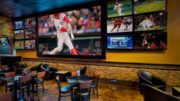The sheer height and overall size of a cell site are the most typical features that draw attention to tall cell towers. You might spot one from a distance, but have you ever had the opportunity to stand close by? If you had, there would undoubtedly be many other aspects you’d begin to notice. For example, closer to the bottom of a tower there is a plethora of carrier equipment installed over a pad or platform, or perhaps within a shelter for added protection. Cabling spiders outward, reaching toward the top of the tower from the ground equipment.
Would You Climb to the Top of a Cell Tower?
Most individuals will not get the opportunity to climb a cell tower, gaining a good view of antenna RAD centers from where they sit. Although these antennas are viewable from ground level, there is more involved than the naked eye can view from so far away. While they are somewhat of an unpraised workhorse, the fact remains, antenna level equipment ensures the appropriate and efficient function of said antennas. Without antenna level and structural equipment like Remote Radio Heads (RRHs), Diplexers, or Tower Mounted Amplifiers (TMAs), and wire rope, cell sites wouldn’t be able to function in the advanced way to which we have all grown accustomed.
1. Remote Radio Heads (RRHs)
Remote Radio Heads are a common type of equipment found in cell sites positioned across the United States. Generally, this kind of equipment is smaller than most, measuring in at a mere 2’x1’x6”. This unit is responsible for moving the bulk of base station equipment toward an enclosed unit found at an antenna level. RRH’s are connected by fiber-optic cables that connect to the main base station and serve to increase system efficiency, provide flexibility, and reduce coaxial feed line losses (due to long runs) overall.
2. Diplexers
This electronic device features two ports, one on each end, to allow the combination of frequencies on two coax cables into one. Later on down the line, the diplexer enables a coax cable to again split back to two cables, further easing the running of coax cables along with a structure of limited weight capacity. Because diplexers greatly reduce the number of cables, the weight and strain are further reduced, which goes to great lengths in preventing a tower from being overloaded. Usually, a diplexer can be found near the ground equipment, which reduces cabling as they run up toward the top to antenna level diplexers. Once you’re at the top of a tower, the diplexers enable these coax cables to split back into two cables.
3. Tower Mounted Amplifiers (TMAs)
A Tower Mounted Amplifier is a type of equipment that serves as a low noise amplifier, which strengthens transmitting antennas and sensitizes receiving antennas to further benefit cell sites. Stronger signals enable any given signal to go out further distances from the cell tower, thanks to the use of a TMA. In the case of increasing overall sensitivity for receiving antennas, a TMA works to improve weaker signals from distant targets. Ultimately, the use of a Tower Mounted Amplifier greatly expands the coverage capabilities of various cell sites, which benefits the end consumer.
- Wire Rope
Wire rope or guy wire are typically used to stabilize free-standing structures. It is commonly used to install towers in the antenna, communications and utility industries. Its big grip dead ends, also known as preforms, are used for high tensioning in antenna towers along with end sleeves, which prevents unraveling.
In Conclusion
When you climb towers on a day-to-day basis, you gain perspective into the inner workings of cell sites. Although at first glance, it seems like an assortment of metal jutting up from the ground, cell towers involve the inner workings of advanced equipment that enable the sending and receiving of various signals. Looking into a few pieces of utilized technology, provides insight into the advantages and efficiency of said equipment, and furthers the advancement of telecommunications.





